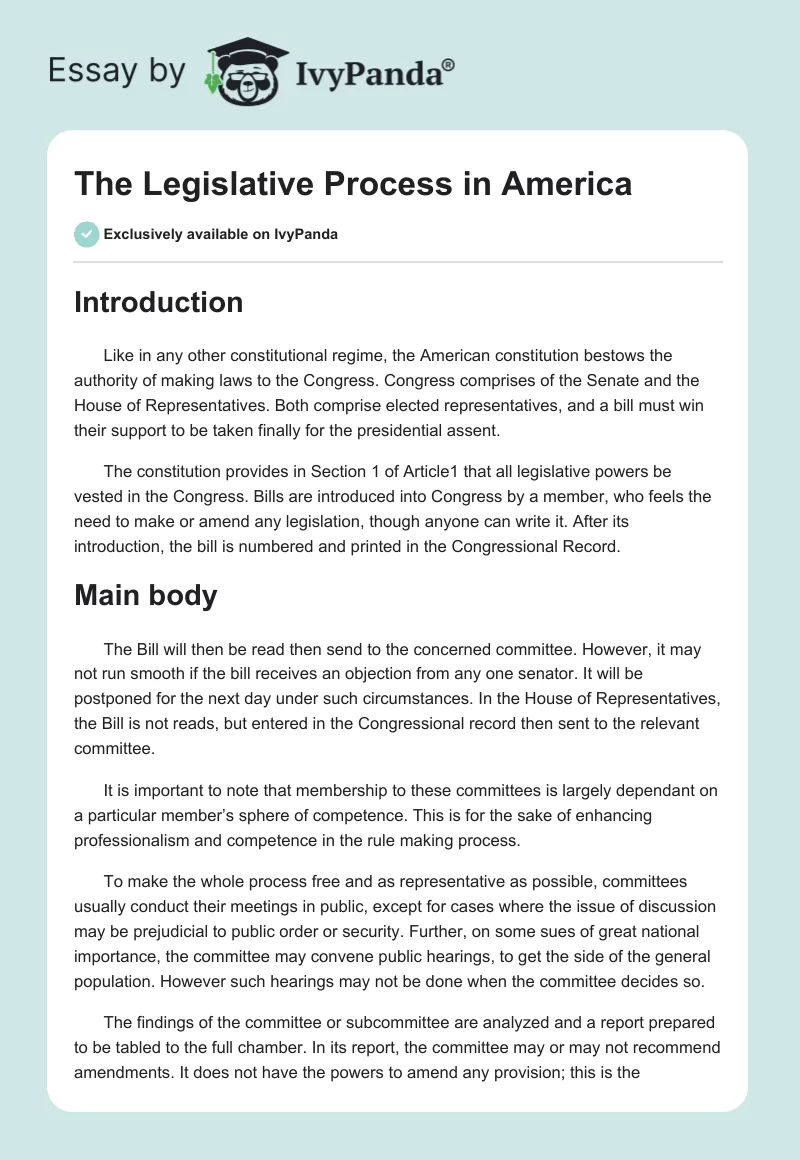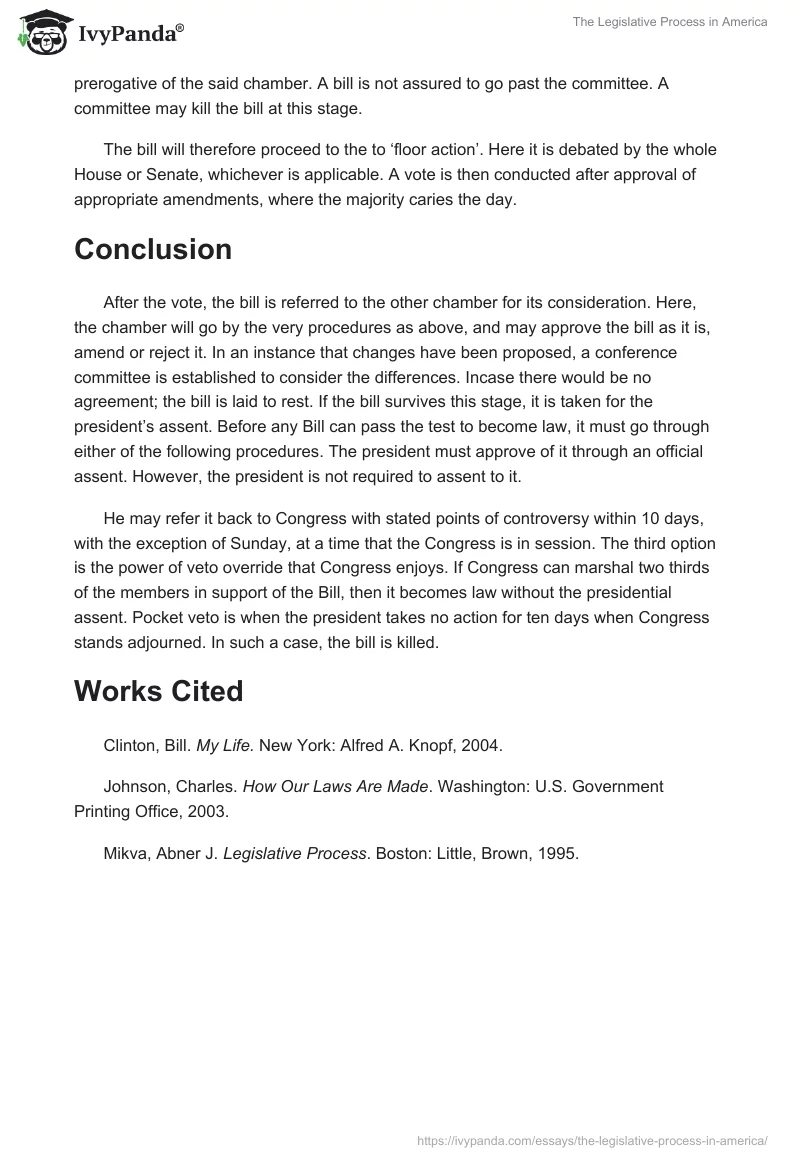Introduction
Like in any other constitutional regime, the American constitution bestows the authority of making laws to the Congress. Congress comprises of the Senate and the House of Representatives. Both comprise elected representatives, and a bill must win their support to be taken finally for the presidential assent.
The constitution provides in Section 1 of Article1 that all legislative powers be vested in the Congress. Bills are introduced into Congress by a member, who feels the need to make or amend any legislation, though anyone can write it. After its introduction, the bill is numbered and printed in the Congressional Record.
Main body
The Bill will then be read then send to the concerned committee. However, it may not run smooth if the bill receives an objection from any one senator. It will be postponed for the next day under such circumstances. In the House of Representatives, the Bill is not reads, but entered in the Congressional record then sent to the relevant committee.
It is important to note that membership to these committees is largely dependant on a particular member’s sphere of competence. This is for the sake of enhancing professionalism and competence in the rule making process.
To make the whole process free and as representative as possible, committees usually conduct their meetings in public, except for cases where the issue of discussion may be prejudicial to public order or security. Further, on some sues of great national importance, the committee may convene public hearings, to get the side of the general population. However such hearings may not be done when the committee decides so.
The findings of the committee or subcommittee are analyzed and a report prepared to be tabled to the full chamber. In its report, the committee may or may not recommend amendments. It does not have the powers to amend any provision; this is the prerogative of the said chamber. A bill is not assured to go past the committee. A committee may kill the bill at this stage.
The bill will therefore proceed to the to ‘floor action’. Here it is debated by the whole House or Senate, whichever is applicable. A vote is then conducted after approval of appropriate amendments, where the majority caries the day.
Conclusion
After the vote, the bill is referred to the other chamber for its consideration. Here, the chamber will go by the very procedures as above, and may approve the bill as it is, amend or reject it. In an instance that changes have been proposed, a conference committee is established to consider the differences. Incase there would be no agreement; the bill is laid to rest. If the bill survives this stage, it is taken for the president’s assent. Before any Bill can pass the test to become law, it must go through either of the following procedures. The president must approve of it through an official assent. However, the president is not required to assent to it.
He may refer it back to Congress with stated points of controversy within 10 days, with the exception of Sunday, at a time that the Congress is in session. The third option is the power of veto override that Congress enjoys. If Congress can marshal two thirds of the members in support of the Bill, then it becomes law without the presidential assent. Pocket veto is when the president takes no action for ten days when Congress stands adjourned. In such a case, the bill is killed.
Works Cited
Clinton, Bill. My Life. New York: Alfred A. Knopf, 2004.
Johnson, Charles. How Our Laws Are Made. Washington: U.S. Government Printing Office, 2003.
Mikva, Abner J. Legislative Process. Boston: Little, Brown, 1995.


